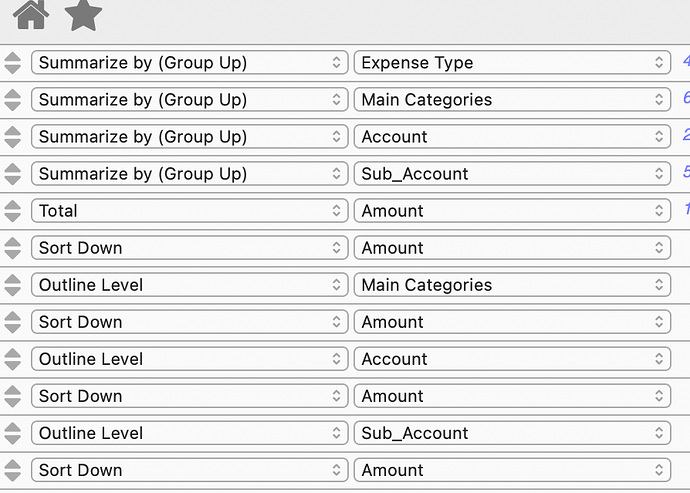Instead of copy/paste, sneak up on this with baby steps. Just start with upper("accounting “)+” - " and get that far. Better yet - I’m all for simplicity where it can be had - why use upper() at all there? You know it’s going to be ACCOUNTING so why not have "ACCOUNTING - " + … and minimize potential syntax errors.
Next, just show month1st(Date) and make sure that it returns what you expect.
If that is good, then show your monthmath(month1st(Date),1) just to be sure it’s happy with the parameters. Finally, if all the parts look good, put the monthmath construction in the date pattern and check that. Note that once again, you don’t need UPPER. Your Pattern MONTH already does that for you. That’s one more set of parenthesis you can remove - one less opportunity to miscount (misconduct).
In playing with this in Formula Workshop (Last choice in Help Menu), I see this “Date” number can be confusing. What exactly is going in there. Do you mean Today(). Also, if it is a variable or field, what is supposed to be in it - a text date, a number representing a date? I’d pick a different name. You don’t want to get close to the names used for functions - there are too many opportunities for confusion.
I followed the steps I suggested above using Today() instead of Date, building the equation a little at a time in Formula Workshop, I got ACCOUNTING - APRIL 2022 without using any Upper functions.
My final formula was …
"ACCOUNTING - " +datepattern(monthmath(month1st(today()),1),“MONTH YYYY”)
One little hill to climb is … though the Result part of Formula Workshop can be enlarged, the formula window itself can’t be - at least not for me. So that long formula doesn’t show itself completely in the formula field. I think the formula field should be expandable. It’s too cumbersome to select/copy the formula after it produces the desired result.
For example, with the formula above, I can only see "ACCOUNTING - " in the window. I triple-click on that in an act of faith that the triple-click will select the rest that I can’t see. It works. But I’d feel better I could expand the formula field to see the whole shebang.

